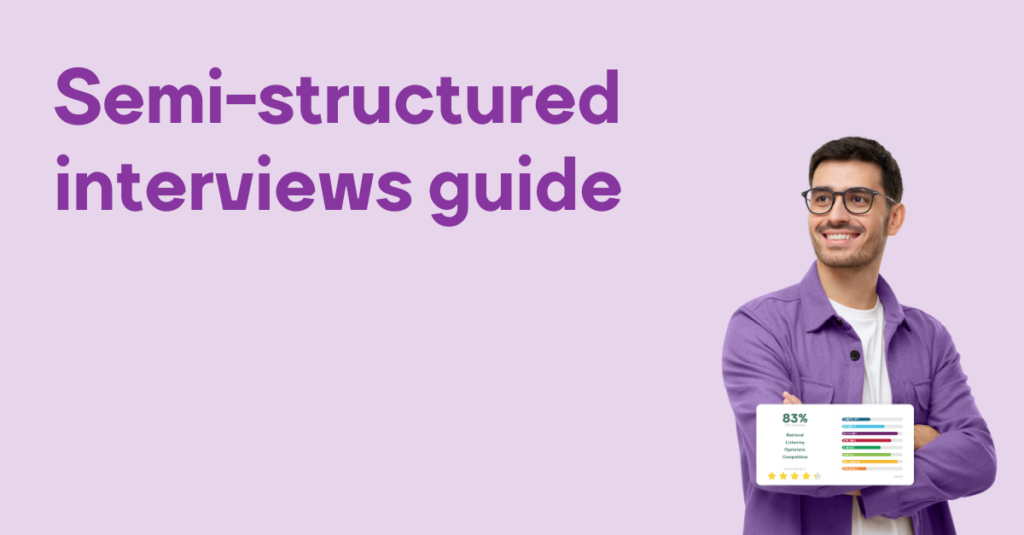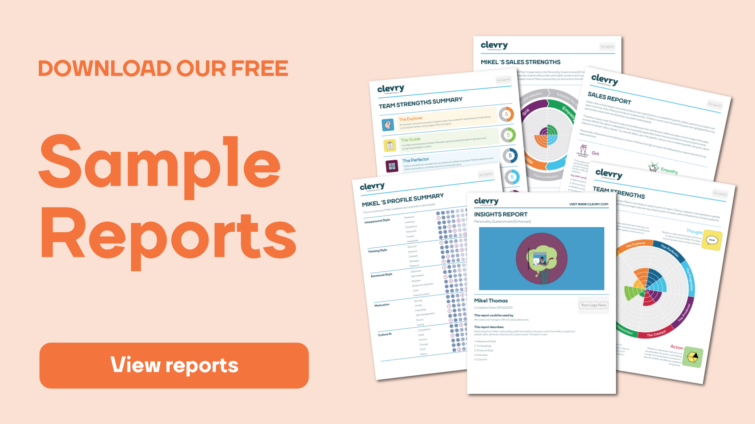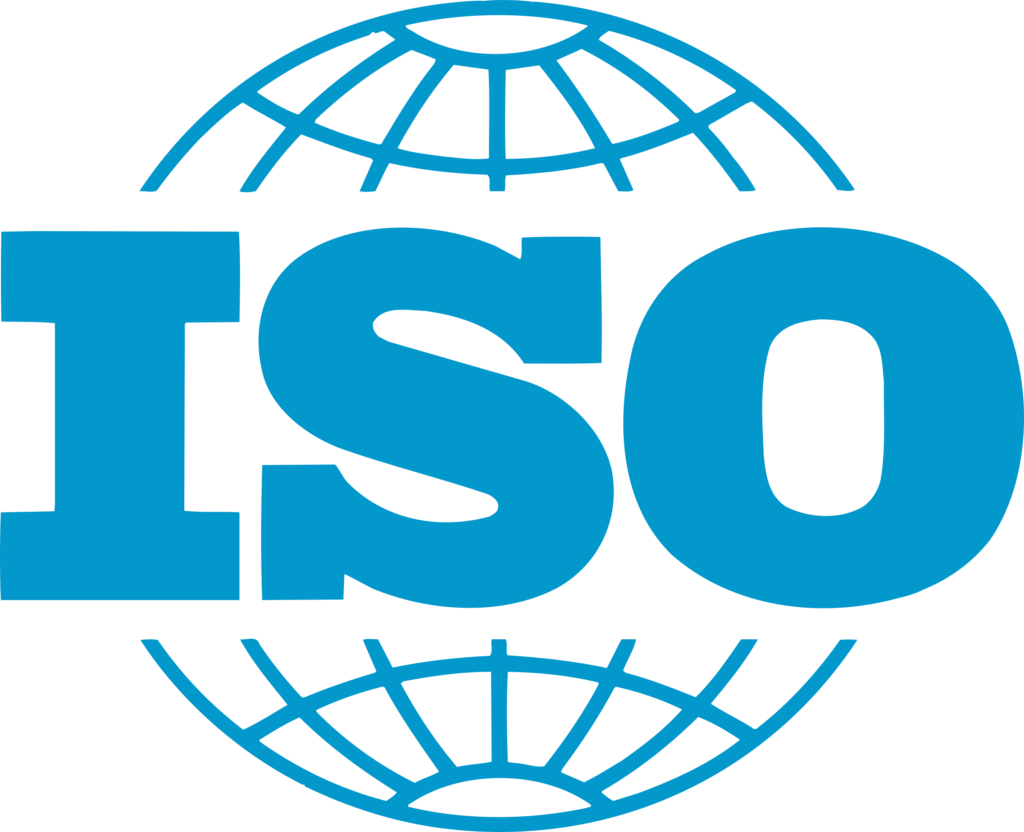
Semi-structured interviews have become an essential tool across various fields, from recruitment to research, due to their unique blend of structure and flexibility. Unlike rigidly structured interviews that follow a strict set of questions, or unstructured interviews that offer little to no guidance, semi-structured interviews strike a balance. They provide a framework of predetermined open-ended questions while allowing the interviewer the freedom to explore responses in greater depth.
This method enables interviewers to cover key topics consistently across interviews while also adapting to the flow of conversation, making room for unexpected insights and deeper understanding. The semi-structured format helps foster a more natural dialogue, encouraging interviewees to share more freely and providing richer, more nuanced data.
Whether you’re conducting job interviews, academic research, or user experience studies, semi-structured interviews offer a versatile approach that can be tailored to suit a wide range of contexts.
What is a semi-structured interview?
A semi-structured interview is a type of interview technique that combines both open-ended and closed questions, allowing for a balance between consistency across interviews and flexibility to explore certain areas in more depth.
The key characteristics of a semi-structured interview are:
Predetermined questions:
The interviewer has a set list of open-ended questions to ask all candidates. This ensures certain topics and areas are covered consistently.
Follow-up questions:
However, the interviewer also has the flexibility to ask follow-up questions based on the interviewee’s responses to explore interesting points further.
Question order flexibility:
While there is a question guide, the interviewer can change the order of questions depending on how the conversation flows.
Room for open discussion:
Semi-structured interviews allow for open-ended back-and-forth dialogue between the interviewer and interviewee, rather than just straightforward question/answer format.
The benefits of using a semi-structured approach include:
- Consistency in core areas explored with each candidate
- Flexibility to dig deeper into relevant areas for that particular candidate
- More natural conversational flow
- Opportunities to uncover details an interviewer may have missed with fully structured questions
Semi-structured interviews strike a balance by having a degree of predetermined structure and consistency while still allowing for spontaneity and the interview to be tailored to each individual.
This technique is commonly used for job interviews, research interviews, and other situations where the interviewer wants some level of standardised questioning combined with the freedom to further probe based on the responses given.
What are the benefits of semi-structured interviews?
There are several key benefits to conducting semi-structured interviews:
Allows for probing and follow-up questions
One of the biggest advantages of semi-structured interviews is the ability for the interviewer to ask follow-up questions and probe deeper on interesting points raised by the interviewee. This flexibility allows the interviewer to gather richer, more detailed information than what highly structured interviews permit.
Builds rapport
The more conversational nature of semi-structured interviews can help build rapport between the interviewer and interviewee. This often puts the interviewee more at ease compared to rigid, inflexible interviews.
Uncovers motivations and attitudes
The open-ended portions of semi-structured interviews enable interviewers to better understand the motivations, opinions, and attitudes behind an interviewee’s responses through further questioning.
Provides comparable data
While allowing for flexibility, the predetermined questions in semi-structured interviews provide a baseline level of data that is comparable across multiple interviews for that same target role or research topic.
Manages interview time effectively
By having a foundational interview structure, semi-structured interviews help the interviewer manage time effectively while still allowing for open-ended exploration.
The versatility of combining structure and freedom in semi-structured interviews makes this approach valuable for many types of hiring, research, journalistic, and other interview contexts where maximising information-gathering is important.
How does a semi-structured interview differ from other types of interview?
A semi-structured interview differs from a normal/unstructured interview and a fully structured interview in a few key ways:
Compared to an Unstructured/Normal Interview:
- Semi-structured has predetermined questions to cover core topics, while unstructured has no set questions
- The semi-structured approach provides more consistency across interviews by asking the same baseline questions
- However, it still allows for follow-ups and open-ended responses like an unstructured interview
Compared to a Fully Structured Interview:
- Fully structured interviews rigidly follow a standardised set of closed-ended questions
- Semi-structured has open-ended questions that enable more dialogue and probing
- The interviewer can reorder, skip, or provide transition questions in a semi-structured format
- Responses in fully structured interviews are very restricted, while semi-structured allows for elaboration
So in essence, a semi-structured interview falls in the middle of the continuum between the two other formats:
Unstructured ———> Semi-Structured ———> Fully Structured
It combines the consistency and focus of a structured approach with the depth and flexibility of an unstructured approach.
The key differentiators of semi-structured interviews are:
- Having a guide of predetermined open-ended questions
- Allowing space for unplanned follow-up questions
- More give-and-take dialogue between interviewer and interviewee
- More ability to explore interesting topics relevantly as they arise
This provides the “semi” structured nature – having an overall framework while maintaining conversational flexibility.
When should a semi-structured interview be used?
Semi-structured interviews should be used when you want to combine some level of consistency across interviews while also allowing flexibility to explore topics in more depth. Some ideal use cases for semi-structured interviews include:
Job Interviews
For hiring, semi-structured interviews allow you to cover core job requirements through set questions, but also dig deeper into a candidate’s specific experiences, motivations, and qualifications through unplanned follow-ups. This provides richer data for evaluation.
User Research
When conducting user research, semi-structured interviews enable you to understand users’ needs, pain points, and behaviours through planned questions, while leaving room to spontaneously probe interesting insights that arise.
Subject Matter
Expert Interviews If interviewing subject matter experts, you’ll want a set of questions to cover key areas, but the ability to dynamically discuss emergent topics for deeper knowledge gathering.
Case Studies
Case study interviews benefit from a semi-structured approach, where you cover foundational background through structured questions, but leave flexibility to explore unique details and perspectives from different stakeholders.
Academic/Marketing Research
Much academic, consumer, and marketing research relies on semi-structured interviews to balance consistency in data collected with opportunities to uncover unanticipated findings.
Generally, semi-structured interviews work well anytime you need to understand not just straightforward facts, but the reasoning, attitudes, and contexts surrounding those facts. The open-ended nature facilitates a deeper understanding.
Semi-structured interviews in recruitment
In recruitment semi-structured interviews can be effectively used for a variety of roles, particularly those that require in-depth evaluation of a candidate’s skills, experiences, and fit beyond just verifying basic qualifications. Here are some examples of roles where semi-structured interviews are well-suited:
Management and Leadership Roles
When hiring for managerial or executive positions, semi-structured interviews allow you to assess leadership competencies, management style, problem-solving abilities, and cultural fit through open-ended questioning. The flexibility enables probing the candidate’s approach to real-world scenarios.
Client-Facing Roles
For roles that involve significant client interaction like sales, account management, or consulting roles, semi-structured interviews help evaluate client service skills, communication abilities, and understanding of client needs through open dialogue.
Creative Roles
Semi-structured interviews are great for assessing creative professionals or innovation roles where you want to understand the candidate’s creative process, idea generation abilities, and innovative thinking beyond just reviewing portfolios.
Technical Roles
While technical skills may be vetted through other means, semi-structured interviews allow you to dive deeper into a candidate’s technical problem-solving approach, ability to communicate complex concepts, and collaboration style.
Senior Individual Contributor Roles
For senior individual contributor roles with high expertise requirements, the open-ended nature enables thoroughly assessing depth of knowledge and specialised experience through exploratory questions.
Cultural Fit Evaluation
Any role where assessing organisational culture fit is critical can benefit from the two-way dialogue and follow-up questioning that semi-structured interviews facilitate.
In general, semi-structured interviews are most valuable for roles that require evaluating more complex competencies, behaviours, thought processes and fit beyond just straightforward skills and experience. The flexible format provides richer data to make well-rounded hiring decisions.
The bottom line
In conclusion, semi-structured interviews offer a powerful method for gathering comprehensive and nuanced information, making them indispensable in various settings, from hiring to research. Their unique combination of predetermined questions and conversational flexibility allows interviewers to maintain consistency across multiple interviews while also delving deeper into areas of particular interest. This approach not only ensures that key topics are covered but also opens the door to discovering unexpected insights that might otherwise go unnoticed in more rigidly structured formats.
The ability to adapt questions based on an interviewee’s responses fosters a more engaging and dynamic dialogue, building rapport and encouraging more candid and detailed answers. This makes semi-structured interviews especially valuable when exploring complex issues, understanding motivations, or evaluating candidates for roles that require more than just a checklist of qualifications. By balancing structure with spontaneity, semi-structured interviews provide a richer, more holistic view of the subject matter, enabling more informed decision-making.
Whether you’re a recruiter seeking the right fit for a role or a researcher aiming to uncover deeper truths, the semi-structured interview offers a versatile and effective tool for extracting meaningful insights, making it a preferred choice in many professional and academic fields.
If you regularly run interviews with candidates then why not check out our How to Interview someone guide.



